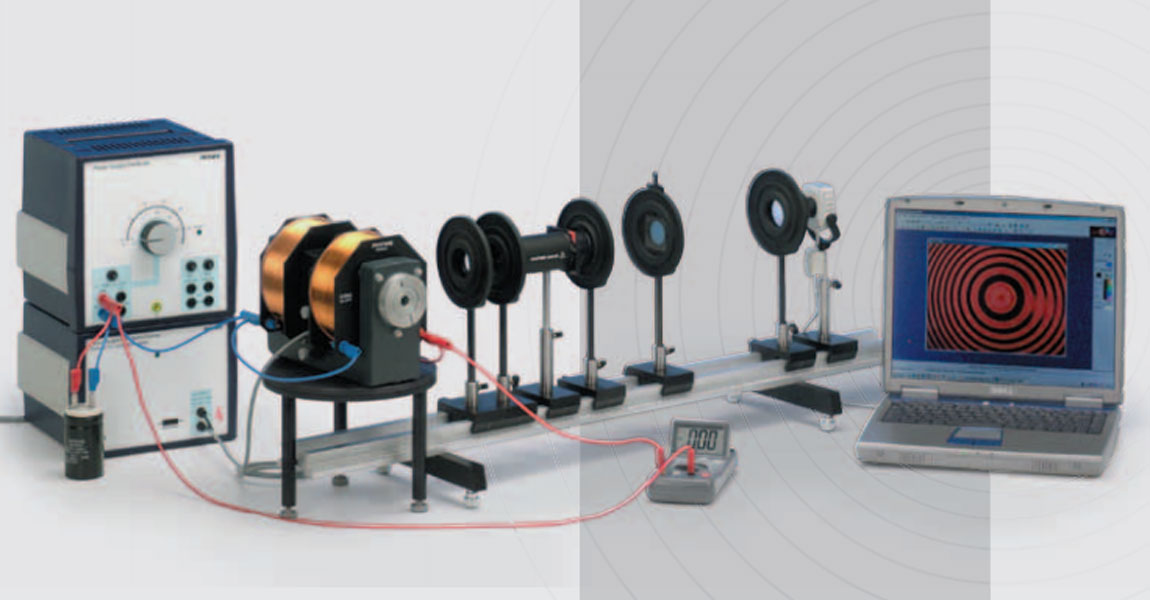Zeeman effect with electromagnet

The “Zeeman effect” is the splitting up of the spectral lines of atoms within a magnetic field. The simplest is the splitting up of one spectral line into three components called the “normal Zeeman effect”. In this experiment the normal Zeeman effect as well as the anomalous Zeeman effect are studied using a cadmium spectral lamp as a specimen. The cadmium lamp is submitted to different magnetic flux densities and the splitting up of the cadmium lines (normal Zeeman effect 643.8 nm, red light; anomalous Zeeman effect 508,6nm, green light) is investigated using a Fabry-Perot interferometer. The evaluation of the results leads to a fairly precise value for Bohr’s magneton.
Lens, mounted, f +50 mm
Lens, mounted, f +300 mm
Iris diaphragm
Optical bench expert, l = 1000 mm
Base for optical bench expert, adjustable
Polarization specimen, mica
Cadmium lamp for Zeeman effect
PHYWE variable transformator DC: 0…20 V, 12 A / AC: 0…25 V, 12 A
Power supply for spectral lamps, 230 VAC/50 hz
MOTIC Moticam 1CMOS Technology
Capacitor,electrolyt.,22000 µF
Electromagnet w/o pole shoes
Pole pieces, drilled, conical
DMM with NiCr-Ni thermo couple
Connecting cord, 32 A, 250 mm, red
Connecting cord, 32 A, 250 mm, blue
Connecting cord, 32 A, 500 mm, red
Connecting cord, 32 A, 500 mm, blue
Connecting cord, 32 A, 750 mm, red
Connecting cord, 32 A, 1000 mm, red
Connecting cord, 32 A, 1000 mm, blue
8 mm lens for Moticam
Diaphragm holder, for beam height 120 mm
Rotary table for heavy loads; for beam height 120 mm
Fabry-Perot interferometer, for beam height 120 mm
Lens holder, beam height 120 mm
Slide mount for optical bench expert; h = 30 mm
High precision slide mount for optical bench expert, h = 30
plateau slide mount for optical bench expert
Holder for Moticam, for beam height 120 mm
- Using the Fabry-Perot interferometer and a selfmade telescope the splitting up of the central line into different lines is measured in wave numbers as a function of the magnetic flux density.
- From the results of point 1. a value for Bohr’s magneton is evaluated.
- The light emitted within the direction of the magnetic field is qualitatively investigated.
- Bohr’s atomic model
- Quantisation of energy levels
- Electron spin
- Bohr’s magneton
- Interference of electromagnetic waves
- Fabry-Perot interferometer
